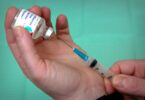Traditional Medicare covers remote monitoring of people with chronic conditions when necessary to ensure their conditions remain stable. UnitedHealthcare is supposed to cover the same benefits as Medicare for people enrolled in its Medicare Advantage plans. But, UnitedHealth is planning to stop covering remote monitoring for most people, beginning in 2026, reports Emma Beavins for FierceHealthcare; it’s another clear indicator that people in Medicare Advantage plans don’t get the same benefits as people in Traditional Medicare, the government-administered program.
Medicare Advantage insurers are legally required to cover all the benefits that Traditional Medicare covers, when medically necessary. But, the Centers for Medicare and Medicaid Services (CMS), which oversees Medicare Advantage, has yet to challenge UnitedHealth’s new coverage policy. If the policy takes effect, UnitedHealth stands to profit significantly, while arguably endangering the health and well-being of its enrollees with hypertension and other chronic conditions.
UnitedHealth claims that remote monitoring for most people with hypertension and type 2 diabetes is not medically necessary, overruling substantial evidence to the contrary. UnitedHealth often overrules the medically necessity determinations of treating physicians. But, it typically does not do so in an across-the-board fashion through a coverage policy at odds with Medicare coverage policy.
Health Secretary Robert F. Kennedy Jr. has spoken out about the value of preventing and treating chronic conditions. Indeed, RFK Jr. expanded Medicare coverage of remote monitoring of people with chronic conditions. But, RFK Jr. has not yet stepped in to prevent UnitedHealth from denying remote monitoring coverage to people for whom it is medically beneficial.
In sum, even though the government pays UnitedHealthcare to cover all the services people in Traditional Medicare receive, UnitedHealth plans to stop covering remote monitoring for people with hypertension and people with type 2 diabetes, two conditions for which remote monitoring is typically used. UnitedHealth is only willing to cover remote monitoring for pregnant women with hypertension and people with heart failure.
Again, UnitedHealth receives taxpayer dollars from CMS to provide the full range of Medicare benefits, including remote monitoring services. The amount UnitedHealth’s Medicare Advantage plans receive from the government is based on the amount spent in Traditional Medicare because Medicare Advantage insurers are supposed to cover the same benefits as Traditional Medicare. So, if Traditional Medicare spends $500 million a year on remote monitoring, as it did in 2024, that amount is factored into the amount Medicare pays UnitedHealthcare for its Medicare Advantage enrollees.
When people enrolled in a Medicare Advantage plan develop a costly condition, odds are high that they will not get the benefits they would in Traditional Medicare and will face inappropriate delays and denials of medically necessary care. Among other things, the data show that people with Medicare Advantage get less nursing care, less rehabilitation care, and less cancer care. Corporate insurers in Medicare Advantage overrule treating physicians all the time and maximize profits in the process. People who appeal denials tend to win on appeal and to get the care their physicians say they need. But, it’s too often after a long delay which can compromise their health.
AARP should be advocating vociferously on behalf of their members in Medicare Advantage. But, the non-profit recently cut a $9 billion deal with UnitedHealth. AARP is steering its members into Medicare Advantage and remaining silent about the gamble their members take with their lives when they enroll. They are not speaking out to fix these egregious issues with Medicare Advantage.
With remote patient monitoring, a device in a patient’s home sends information about the patient to the patient’s physician. Physicians get regular reports about their patients’ weight, blood pressure and blood glucose levels. Based on this information, physicians can adjust their patients’ treatment plans.
Two studies found that remote patient monitoring led to a significant (27 percent) reduction in hospital admissions for heart failure and stroke and saved between $1,308 and $2,592 a year for each patient with heart failure, hypertension and type 2 diabetes.
Here’s more from Just Care:
- 2026: Five things to think about when choosing between Traditional Medicare and a Medicare Advantage plan
- UnitedHealth deprives members of critical rehabilitation care
- Does UnitedHealth use flawed AI to deny care in Medicare Advantage?
- UnitedHealth accused of preventing nursing home residents from getting needed hospital care
- UnitedHealth care delays, denies and grows ever bigger










